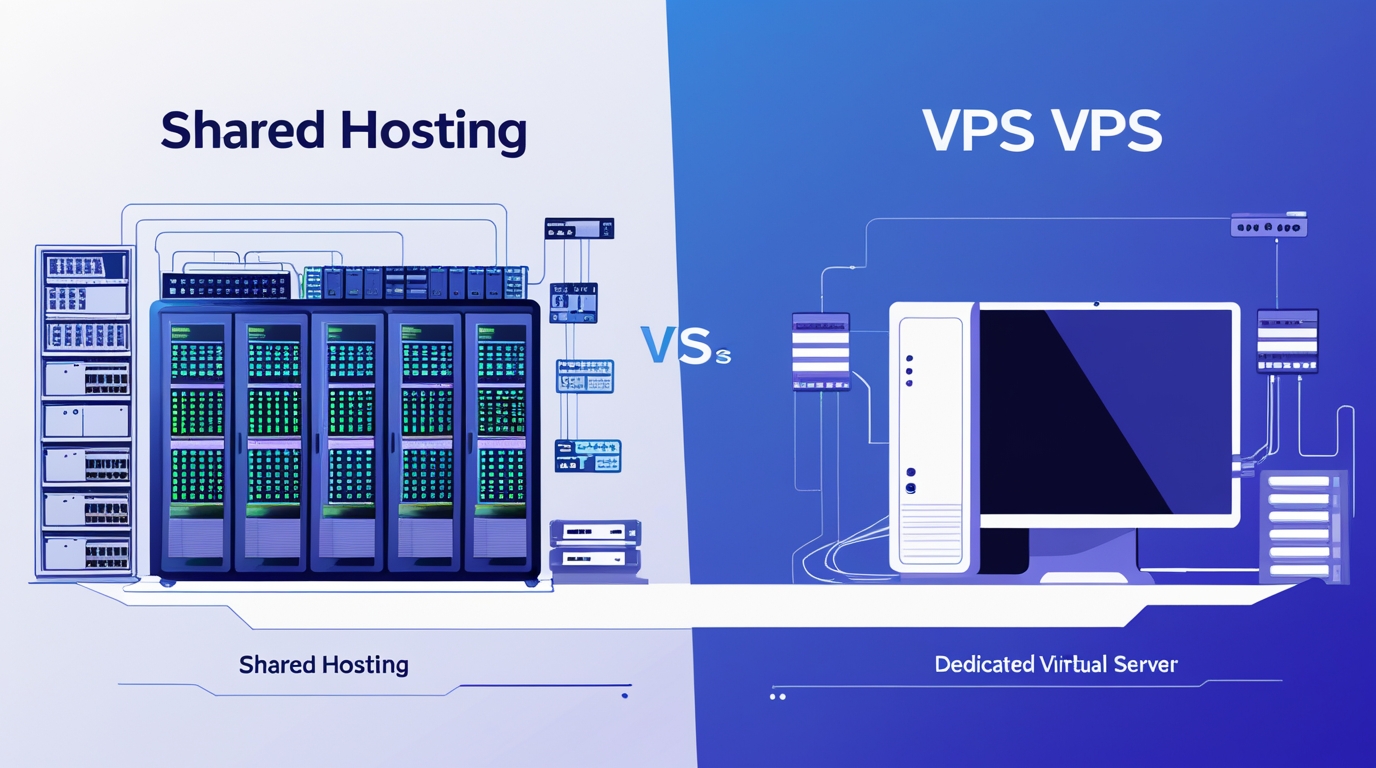Slow-loading pages can frustrate your readers and push them to competitors. Shared hosting vs VPS plans differ in cost, performance, and control. Shared hosting often starts at $3 to $10 per month, while a VPS plan begins around $20 to $80. In this guide, you’ll learn how each hosting type works, compare resources and prices, and find the smart choice for your growing blog. Good news, moving to a new server plan is easier than it sounds.
Understand hosting tiers
Your hosting plan is the foundation for your website’s performance. Most bloggers choose from three main options. Each level offers a different balance of cost, resources, and management responsibility. Good news, you can always start on a shared plan then upgrade to VPS or dedicated as your needs evolve.
Shared hosting basics
With shared hosting, multiple sites share the same server resources. That means you split CPU, RAM, and bandwidth with other accounts. Plans often include a user-friendly control panel, one-click installs, and basic support. You pay a low monthly fee, ideal when you’re just starting or experimenting with a blog. But if a neighbor site spikes in traffic, your load times can rise. Shared hosting typically works well for up to 10,000 monthly visits.
VPS hosting basics
In a virtual private server setup, your host partitions a single physical machine into multiple virtual machines. Each VPS gets dedicated CPU cores, RAM, and disk space. You enjoy more consistent performance and full root or administrative access. Many providers offer managed VPS—where they handle updates and security—or unmanaged plans for DIY control. VPS hosting usually fits sites with 20,000 to 100,000 visits per month.
Dedicated Server Basics
A dedicated server gives you the entire machine to yourself. You control every aspect of configuration, from operating system to security software. This tier delivers the highest performance, reliability, and customization. It also carries the steepest price tag and demands server-administration skills. Dedicated servers are best when you hit hundreds of thousands of visits per month or need specialized hardware setups.
Compare performance and scalability
Performance is key to keeping readers engaged and search engines happy. When you evaluate hosting, look at how resources are allocated and how easily you can scale as traffic grows.
| Hosting type | CPU cores | RAM | Monthly visits (approx) | Scalability |
|---|---|---|---|---|
| Shared hosting | Shared (around 1 core) | 1–2 GB | Up to 10,000 | Limited (upgrade to higher tier) |
| VPS hosting | 1–4 dedicated cores | 2–8 GB | 20,000–100,000 | Good (add CPU, RAM on demand) |
| Dedicated server | Multiple dedicated | 8 GB+ | 100,000+ | Excellent (custom hardware options) |
Things to consider when comparing shared hosting and VPS:
- CPU consistency: shared plans can throttle your site if neighbors peak.
- Memory headroom: ensure your site has enough RAM during traffic surges.
- Burst capacity: check if your VPS allows short-term resource spikes.
- Upgrade flexibility: some providers let you add CPU or RAM with one click.
As your blog grows, these differences become clear and you’ll know when to switch.
Weigh cost and features
Your budget and required features guide which plan makes sense. Shared hosting delivers entry-level pricing, VPS offers mid-range value, and dedicated servers handle advanced needs.
cost comparison
| Plan type | Price range (monthly) | Key features |
|---|---|---|
| Shared hosting | $3–10 | Basic control panel, shared resources, limited traffic |
| VPS hosting | $20–80 | Dedicated CPU/RAM, root access, optional managed support |
| Dedicated server | $80+ | Full server control, high performance, custom configurations |
pros and cons
- Shared hosting
- Pros: lowest cost, easy setup, beginner-friendly
- Cons: variable performance, limited control, minimal security isolation
- VPS hosting
- Pros: consistent resources, more control, better security
- Cons: higher cost, learning curve if unmanaged
- Dedicated server
- Pros: maximum performance, full customization, isolation
- Cons: highest price, requires server-admin skills
Even if you’re on a tight budget, a basic VPS plan can deliver a big speed boost.
Plan your upgrade path
You don’t have to switch overnight. A clear roadmap helps you upgrade without downtime.
- Measure current metrics. Track page-load times, CPU and memory usage, and monthly visitors.
- Forecast growth. Estimate traffic for the next 6–12 months, and factor in seasonal peaks.
- Set a budget. Decide what you can comfortably spend on hosting each month.
- Choose your plan. If you need more consistency and control, pick a VPS option.
- Test and migrate. Back up your site, spin up the new server, and swap DNS during low-traffic hours.
- Monitor performance. Use uptime monitors and analytics to ensure your upgrade delivers on speed.
If you outgrow a VPS, check our vps vs dedicated server comparison. You’ve got this as you grow your blog.
Quick recap and next step
- Start with shared hosting when you’re under ~10,000 visits per month.
- Move to a VPS plan for 20,000–100,000 visits or when speed matters.
- Consider dedicated servers for six-figure traffic or custom requirements.
- Balance cost, performance, and management time when picking a host.
Pick one next step, schedule your migration, and watch your site speed climb. Your readers will thank you.












